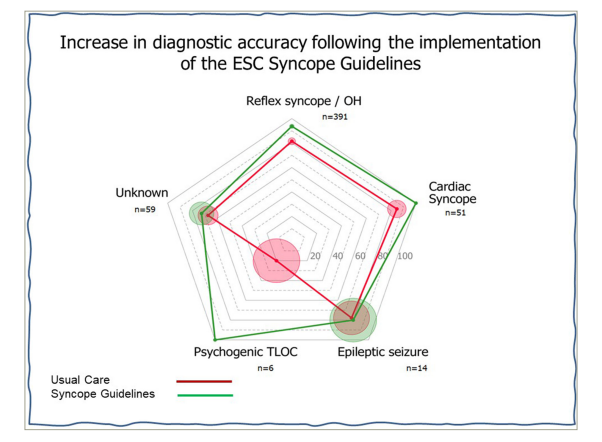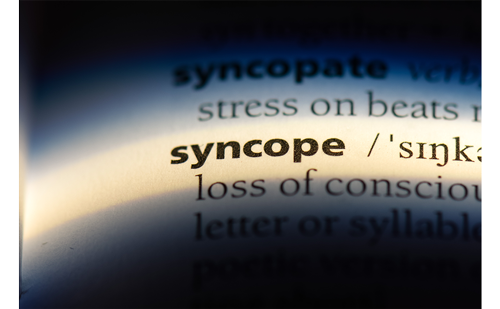The Leiden University Medical Centre, Netherlands, has been recognized worldwide as a Center of Excellence for syncope, a common and yet all too often misdiagnosed symptom. Roland Thijs has received this prestigious award in recognition of its pioneering work for Implementation of the ESC Syncope Guidelines in the emergency ward. His team reported an improvement in diagnostic yield, accuracy and societal costs in the SYNERGY study.
Q. Can you briefly explain the current challenges with syncope management in the emergency department, and the effect of these on patient care?
Syncope is an extremely common presention with a broad range of causes ranging from very benign (e.g. vasovagal syncope) to life-threatening conditions (e.g. ventricular arrhythmias).1 It is this fact that creates a major challenge for the jobbing physician who has to reliably differentiate between these wide variety of conditions that also cross the boundaries of specialties. As a result, syncope management is fraught with unnecessary tests and frequent failure to establish a diagnosis. The diagnosis is often inaccurate, inefficient, delayed or unknown.
Q. What were the main objectives of the SYNERGY study, and how did they relate to the implementation of the European Society of Cardiology syncope guidelines?
In the SYNERGY study, we hypothesized that implementing the European Society of Cardiology (ESC) syncope guidelines could improve the quality of care by offering the jobbing physician in the emergency department (ED) a basic framework to identify the low and high risk cases.1,2 We also anticipated that an additional solution would be required for the evaluation of the more complex cases. For this situation, we established multidisciplinary Syncope Units as recommended by the ESC. The objective of the SYNERGY study was to determine the added value of simultaneous implementation of the ESC syncope guidelines in the emergency department (ED) together with quick access to a dedicated outpatient Syncope Unit.
Q. What specific changes or interventions were implemented to improve diagnostic performance and lower costs?
The SYNERGY study included two components: the implementation of the ESC 2018 syncope guidelines in the ED for all specialties by educating all involved healthcare providers; and the establishment of a multidisciplinary Syncope Unit with quick referral routes for outpatient evaluation if needed.2 The ESC syncope guidelines were implemented in the ED to structure the evaluation of suspected syncope in a stepwise manner: first, recognition of transient loss of conciousness (TLOC) and differentiation between syncope and non-syncopal TLOC; followed by an initial syncope evaluation (i.e., structured history taking, physical examination, supine and upright blood pressure measurements, and a 12-lead electrocardiogram); and finally a risk stratification in those without a certain or highly likely diagnosis. Management strategies differed by risk. Those with low-risk criteria only were discharged home or referred to the general practitioner; those with any high-risk factor for cardiac syncope were evaluated by a cardiologist in the ED; those with intermediate risk could be referred to the newly established Syncope Unit or admitted for further evaluation, the choice was left to clinical judgement. Syncope Unit referral was also recommended for those with intermediate risk following an uneventful clinical observation period or for those with exclusively low-risk features but recurrent and incapacitating syncopal events. Prior to the intervention period, no participating hospital had implemented the ESC syncope guidelines in the ED and none of the EDs referred to a multidisciplinary Syncope Unit.1
Q. In your study, how was diagnostic performance measured, and what were the key findings or outcomes?
We gathered all clinical information pertaining to the initial event and classified the treating physician’s diagnosis according to predefined criteria. One-year critical follow-up data were used to define a gold standard reference diagnosis by applying ESC criteria or, if not possible, evaluation by an expert committee. We ascertained diagnostic yield by calculating the proportion of patients receiving a diagnosis of TLOC and determined accuracy by comparing the treating physician’s diagnosis with the reference diagnosis determined after critical follow-up. We compared diagnostic performance in two sequential groups of patients with syncope visiting the ED, one before the guidelines intervention (usual care) and one afterwards. We found that the diagnostic yield was higher in the syncope guidelines group compared with usual care (89% versus 76%, 95% CI 6–19%). The diagnosis of the treating physician matched the reference diagnosis more frequently in the syncope guidelines group than in the usual care group (risk ratio 1.15, 95% CI 1.07–1.23). The accuracy improved across all diagnostic categories (Figure 1); blood pressure related causes of syncope (orthostatic hypotension and reflex syncope) were the most common causes of syncope.2
Figure 1: Change in diagnostic accuracy following syncope guidelines intervention: Accuracy is presented per diagnostic category.2

OH = orthostatic hypotension; TLOC= transient loss of conciousness.
Reproduced from Ghariq M. et al.2
Q. What were the main challenges or barriers encountered during the implementation process, and how were these addressed?
It is important to stress that our intervention lacked supervised management to control the uptake of the ESC guidelines. As a result, we saw indications of the intervention in some but not all cases. Our findings therefore reflect a real-world situation, thus strengthening the generalizability. It also indicates that the intervention is powerful enough to even yield positive results in real-world situations with incomplete adherence. We believe that even better results can be obtained with specific interventions to promote adherence. We did therefore use the possibility of the trial to carefully monitor the implementation process with qualitative interviews.3 While most professionals in our trial welcomed the structured workflow in the ED and the multidisciplinary Syncope Unit as a useful solution to a perceived need in clinical practice, remaining barriers occurred on the level of the individual healthcare professional (e.g., inexperienced residents having to work with the guidelines in the ED) and the organizational context (e.g., specialists not relinquishing preceding procedures). For example, orthostatic blood pressure measurements were often not performed because their yield was perceived as low. Change may be more likely if implementation strategies are specifically chosen to address frequently encountered barriers in physicians’ existing knowledge, attitudes and behaviour.
Q. Are there any recommendations you would make for other hospitals or emergency departments considering a similar implementation?
The ESC syncope guidelines offer an easy and valuable framework to improve the quality of care in the ED. Implementation can be strengthened by establishing a multidisciplinary Syncope Unit. It is unlikely that every hospital will be able to offer such care services within their hospital; however, it is important that physicians can refer complex cases to nearby hospitals within the region. It is also extremely important to examine the local infrastructure in the ED. While extremely prevalent, syncope has many causes across specialties but its management is without one defined specialty that takes the lead. Improved team communication and interprofessional collaboration with clearly defined tasks among all professionals involved is thus an important facilitator.







